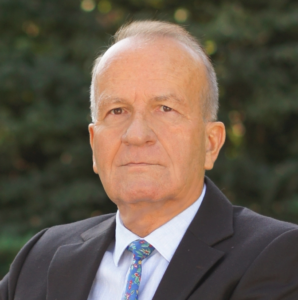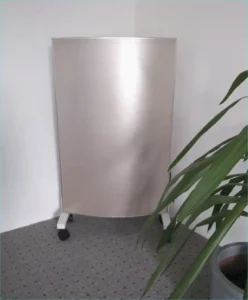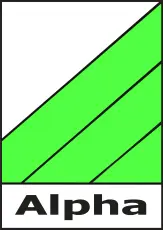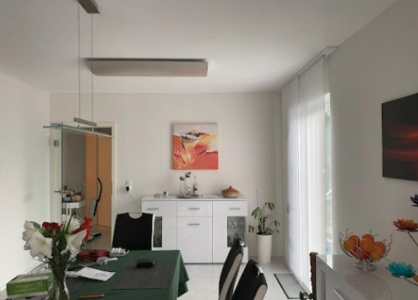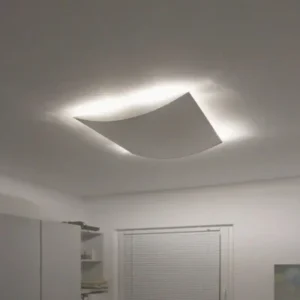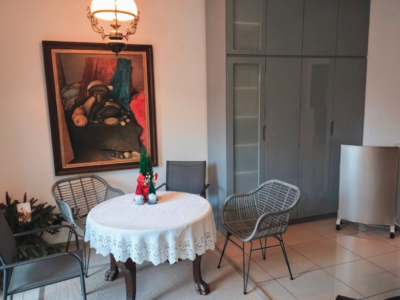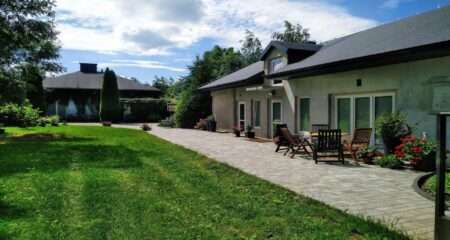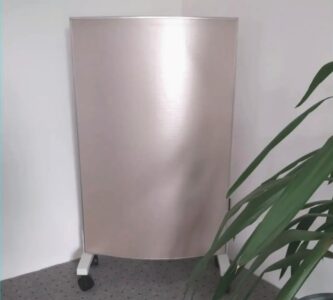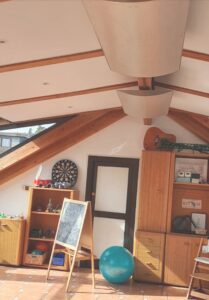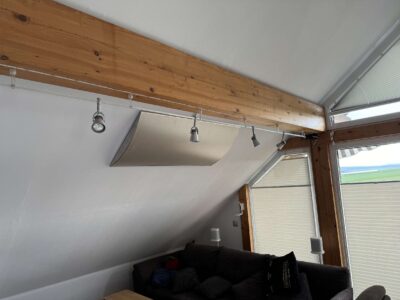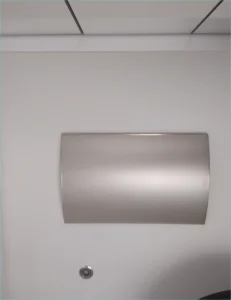 Infrared energy experts AbegSun
Infrared energy experts AbegSun
German product direct from the manufacturer
Manufacturer: ABEG Anlagen GmbH
Falkensteinstr. 13A • 34132 Kassel
Administration phone: +49 561 50811

AbegSun is a heating system of superlatives: low purchase costs, no maintenance, no boiler room, no tank farm, no chimney and high energy efficiency thanks to one of the highest heating efficiencies in the world - proven with the test certificate of the TU Dresden according to DIN EN IEC 60675-3.
Attention - there is no other heating system for which Attention - there is no efficiency test according to DIN for any other heating system. about the useful energy in the room! JAZ, COP and SCOP of a heat pump have nothing to do with efficiency! Don't go into completely senseless debt for the rest of your life with an expensive heat pump! No hot water heating system will ever pay for itself compared to the life cycle of an infrared heating system.
Find out about the technical data before buying a heater. For example, compared to a heater with a radiation temperature of 70°C (e.g. for picture heaters), AbegSun has a lower radiation temperature according to the Stefan-Boltzmann law 16 times the radiant power!
Meet with AbegSun the right option for one of the best heating systems in the world. - Your wallet will be delighted!
Bad news: Mannheim, Stuttgart and Augsburg are the first cities to shut down the gas network in 2035 as part of municipal heating planning.
Find out more for your own benefit at Comparison of heating technologies →
• High efficiency with AbegSun of 69.5% (± 2.8%) from a maximum of 70%
- High radiation temperature of over 145°C with large lateral dispersion
- Lowest possible heat loss from the rear thanks to up to 6 cm of mineral insulation
• extended beam angle of 147° for large-area heat distribution in the room
• Extremely short heat-up times of approx. 120 seconds to 100°C radiant temperature
• low weight of the elements, approx. 2-5 kg for easy installation and handling
- 1-click magnet mounting system for lightning-fast and cost-saving installation
• intelligent wireless thermostat controls for maximum energy savings
• Research and in-house production with modern laser manufacturing technology
• 10 years Garantie (AGB´s →) on heatings, 2 years on electronics
Information: - 1-click installation system for lightning-fast and cost-saving installationAccording to a study by the Fraunhofer Institute, infrared heating is 32% more efficient than gas condensing heating - and that with an efficiency of only approx. 50% for the infrared heaters used.
AbegSun has the highest possible efficiency of almost 70%. It is one of the most economical heating systems in the world - both in terms of purchase and consumption.
• Environmentally friendly, sustainable, resource-saving, recyclable, repairable
Infrared radiation is light radiation of a certain frequency, similar to solar radiation. It is emitted by an infrared heater as heat directly into the room without heating the air. It travels through the room at the speed of light and is partly absorbed and partly reflected by people, objects, walls and ceilings. This process continues until the energy is completely used up.
It often hits each area several times, so that the room warms up evenly. If a person is hit several times, they are warmed each time by the same, already paid-for energy - unique and only possible with radiant energy! unique and only possible with radiant energy!
Compared to convection heating, the room temperature of an infrared heater can be set 2° C lower than usual because convection heat has a cooling effect due to the movement. This also saves energy.
An infrared heater is a direct heating system that does not require a burner, compressor, pumps, valves or meters of hot water pipes. This means that infrared heating is durable, maintenance-free and cost-effective, and extremely easy to install. There is no need to transfer temperatures from the ground or air to another medium by heat exchange. The room temperature of the previous day is simply raised to the comfortable temperature. There is no need to extract heat (or cold) from the outside air or geothermal energy 60-120 meters deep from the earth in order to then transfer it to the heating water by heat exchange, which causes losses.
At night and also during the day, when no one is in the room, everything is off. - Consumption is ZERO.
The energy consumption of an infrared heating element depends on the wattage specified by the manufacturer. A radiator with 1000 watts of power consumes 1 kilowatt hour of electricity per hour. If you pay 32 cents for this, that is the cost of heating for one hour.
Allerdings ist eine thermostatgesteuerte Infrarotheizung immer nur den Bruchteil einer Stunde eingeschaltet; denn nach Erreichen der vom Bewohner gewünschten Solltemperatur schaltet sie automatisch ab. Erst nachdem die Temperatur um die eingestellte Verzögerungszeit (Hysterese) gesunken ist, schaltet sich die Heizung wieder ein. Die Hysterese ist in der Regel bei Infrarotheizungen auf 0,5-1°C eingestellt. Bedingt durch das Aufwärmen der Personen, Gegenstände und Wände des Raumes werden die Ausschaltzeiten immer größer.
Wird ein Heizkörper mit großer Leistung verwendet, schaltet er sich bei Erreichen der eingestellte Solltemperatur entsprechend seiner höheren Leistung eher ab als ein Heizkörper mit kleinerer Leistung. – Der Verbrauch ist gleich. The power in watts therefore does not provide any information about the consumption costs of an infrared heater. These are largely dependent on the efficiency and heating behavior of the occupants.
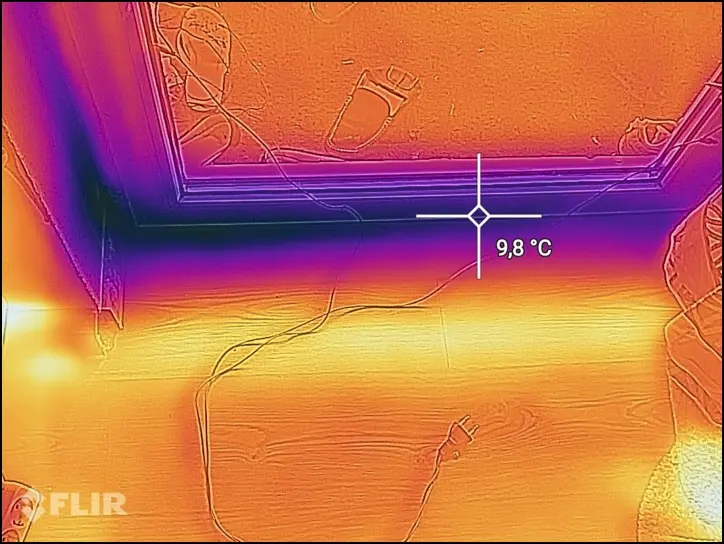 Allein ausschlaggebend für die Höhe der Heizkosten bei Infrarotheizungen sind:
Allein ausschlaggebend für die Höhe der Heizkosten bei Infrarotheizungen sind:
the energy quality of the building - thermal insulation and airtightnessIf the efficiency is poor, consumption is always higher than necessary! Poor is 40%, excellent is 70%. This is the highest percentage that is physically possible. AbegSun has achieved 69.5% according to the DIN test certificate.
If you are in the radiation angle of an AbegSun radiator, you will feel a heat of 100°C after just 120 seconds (TU Dresden test certificate). This is only impaired if the airtightness of the room is poor.
The light/heat particles (photons) travelling at the speed of light gradually heat the room evenly. The radiant heat is partly absorbed and partly reflected. All areas of the room, ceilings, walls and floors, including the corners of a room, are covered. This is in contrast to convection heating, where areas are not heated at all (the corners of a room) and some are heated excessively (the ceilings of the room).
In order not to lose the advantages of dust-free, healthy indoor air through the use of infrared radiant heating, one must do not follow the excessive legislation in the new Building Energy Act (GEG). After the building has been made airtight with great effort (Blower Door Test), a forced ventilation prescribed. This negates the benefits of radiant heat and impairs the high air quality achieved in the room. For people who suffer from dust allergies, forced ventilation is harmful to their health.
Forced ventilation causes unintentional convection in the room. This means heat losses, as moving air has a cooling effect of approx. 1.5 - 2°C. This must be compensated for by additional heat (turning up the thermostat) and is therefore negative in energy terms.
The basis for a statement about the consumption costs of infrared heating elements is always the efficiency tested in accordance with DIN. The scientific consensus is that only heating elements with an efficiency of at least 40% should be referred to as infrared heating elements. If it is below this, the radiant power is so low that mainly inefficient convection heat is generated.
However, the specified output in watts does not provide any information about the total consumption of an infrared heater, as the temperature is regulated by so-called intermittent operation, i.e. switching on and off. Whenever the set target temperature (also the user's comfort temperature) is reached, the heater switches off and then switches on again after the temperature has dropped by more than 0.5-1.0°C. If the electrical output of a heating element is high, this does not mean that more energy is consumed overall; because if the output is higher, it switches off earlier. The consumption costs remain the same.
A large radiator therefore does no harm. It just warms up the room more quickly and you are always on the safe side when outside temperatures are low and the building is poorly insulated.
The size of the heating elements can be determined by calculating the heat requirement or by measuring consumption before purchasing the heating system. The Service of ABEG can be used. If consumption is known from electricity bills, it is possible to determine how high the consumption costs will be. Then the Additional costs with poor efficiency can be calculated.
Smart meters can be ordered from many electricity providers from mid-2025. These will measure electricity consumption on an hourly basis. This will make it possible to control the timing of electricity consumption, i.e. you can then charge the batteries used for heating or the electric car in front of the door with cheap direct electricity. This makes the price of electricity cheaper.
A research project with a comparison between a water-based heat pump underfloor heating system and an infrared heating system revealed:
"Laboratory room measurements with set intermittent operation showed an increase in consumption differences between underfloor heating and infrared heating rooms of 15 %.
The controller used here was an “intelligent” room control system that independently determined the heating time required to reach a set temperature at a specific time. This control system worked very well for the electric underfloor heating and the IR heating. As the heat pump did not deliver a constant output due to its modulating operation depending on the heating curve, the control system was also unable to determine an exact heating-up time. As a result, heat was also supplied to the underfloor heating outside the scheduled heating times.
A simulation of intermittent operation for both heating systems with a heat pump without modulating operation and in well-insulated south and north-facing rooms resulted in a ca. 2% geringeren Energieverbrauch für die Infrarotheizung.
Source: “IR-Bau” research project; final project report: status: 02/2020;
Aktenzeichen: SWD-10.08.18.7-17.11
Clearly - the heating system with the highest efficiency. The differences between the products are immense and can generate several hundred euros in additional costs per year for a single-family home. Remarkable: - there are no efficiency measurements according to DIN for heat pump heating. The annual coefficient of performance JAZ says nothing about the efficiency of the entire heating system. For the efficiency, the useful heat in the room must be measured according to a regulated procedure, a DIN.
To the table of energy losses due to poor efficiency →
The consumption costs of infrared heating elements can only be calculated via their Efficiency must be assessed. The scientific consensus is that only heating elements with an efficiency of at least 40% can be described as infrared radiators. If it is lower, the radiant power is so low that mainly inefficient convection heat is generated. Due to the losses during the conversion of electrical energy into thermal energy, a maximum efficiency of 70% in accordance with DIN EN IEC 60675-3 can be achieved with so-called “gray radiators” for living spaces.
If the electrical output of a heating element is high, this does not mean that more energy is consumed overall; this is because a higher output switches off earlier. The consumption costs remain the same. A large radiator therefore does no harm, but it heats up more quickly. Another advantage is that you are more on the safe side when outside temperatures are low and the building is poorly insulated.
Comparisons of the consumption costs of infrared heaters are only possible by comparing the DIN-tested efficiency and the length of the heating time (dynamic factor). Both are shown in the Prüfzeugnis des Wirkungsgrades and must be available for inspection before a purchase decision is made. The number and size of infrared heaters can only be determined by the size of the room and the type of use of the room (e.g. living room, children's room, guest or bathroom). A heat load calculation according to DIN, as is valid for hot water heating systems, would lead to incorrect results. We are not dealing here with thermodynamics, but with quantum physics and the calculation according to the Stefan-Bolzmann formula.
The efficiency of infrared heating elements is scientifically proven (DIN EN IEC 60675-3) to be a maximum of 70% (± 2.8%) due to losses during the conversion of electrical energy into heat. AbegSun has 69.5% and is therefore one of the infrared heating elements with the lowest consumption costs.
We have Dr. Kosack and his work as a professor at the University of Kaiserslautern to thank for the existence of a DIN standard for measuring the efficiency of infrared heaters. In the DIN EN IEC 60675-3valid from January 1, 2023, specifies the criteria that must be applied when testing the efficiency of infrared heaters. The Technical University of Dresden has set up a measuring room in accordance with these criteria and carries out the DIN efficiency tests.
The criteria include:
Heat losses to the rear are not specifically measured in the DIN test, as they affect the front surface temperature at full height as a loss. This reduces the efficiency. As losses always occur physically when converting electrical energy into heat, the Claim of almost 100% efficiency of infrared heaters is incorrectif not a deliberate deception. It is thereby Primary energy with useful energy of the room. Look at the Additional costs with poor efficiency to.
In addition, according to Forschungsprojekt „IR-Bau“; Final project report: Status: 02/2020; File number: SWD-10.08.18.7-17.11:
"When designing infrared heaters, optimum insulation on the back is crucial for the radiation efficiency. Furthermore, the position in the room also has an influence on the radiation efficiency. Here it has been shown that a Ceiling suspension of the systems is advantageous on the radiation efficiency, as this reduces the heat dissipation via convection. However, it may also be possible to minimize the convection component of wall-mounted infrared heaters through design measures. However, there is still a need for further research here."
"The efficiency of an infrared heater determines what percentage of the electrical energy supplied is emitted into the room in the form of radiant heat. The remaining part is emitted in the form of convection or heat conduction and may not be used primarily to heat the room. The radiation efficiency is therefore a decisive factor for the efficiency of an infrared heating system."
Measurements of the radiation efficiency of various infrared heaters available on the market have revealed major differences. The radiation efficiency varies between 40 % and 70 % depending on the manufacturer. Until now, there has been no standardization that generally defines how the radiation efficiency and therefore the quality of an IR heater is determined."
Note AbegSun: the standardization has been in force since 1 January 2023 - AbegSun 69,5%
The scientific consensus is that from a radiation temperature of 60-70°C upwards and an efficiency of at least 40%, a heater can be described as an infrared heater. However, our experience, statements from customers and measurements with the infrared camera have shown that at these low temperatures, hardly any heat can be felt even at a short distance. This is also logical, as the radiation temperature decreases with the square of the distance and the heat is already lost upwards near the heating element as convection heat. With these heating elements, the proportion of convection heat is higher than the proportion of radiation heat. Consequently, infrared radiators should only be used at higher temperatures.
For a high degree of efficiency, the front surface temperature should be as high as possible, as the Radiant power increases by a factor of 16if the temperature is doubled (Stefan-Boltzmann law).
According to TU Dresden, AbegSun has an average radiation temperature of 145°C. This is a decisive factor for high efficiency with low consumption. Compared to a heater with a surface temperature of approx. 70°C, AbegSun has 16 times the radiant power!
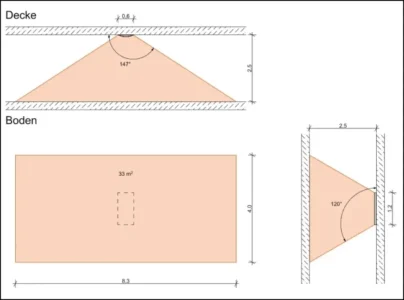 An infrared heater emits light radiation consisting of photons. Light has a radiation angle of 120° on a horizontal surface. If an infrared heater such as AbegSun has a larger radiation angle, e.g. 147° as with AbegSun, this results in a faster, large-area distribution of heat radiation in the room. In this case, a large radiant heat has a particularly positive effect. - The room warms up faster and more evenly due to the greater reflection and absorption.
An infrared heater emits light radiation consisting of photons. Light has a radiation angle of 120° on a horizontal surface. If an infrared heater such as AbegSun has a larger radiation angle, e.g. 147° as with AbegSun, this results in a faster, large-area distribution of heat radiation in the room. In this case, a large radiant heat has a particularly positive effect. - The room warms up faster and more evenly due to the greater reflection and absorption.
As the heat radiation decreases with the square of the distance, it is important for the efficiency of an infrared heating element that the front radiation temperature is high. It can then be noticeably distributed over the large area in the room. With AbegSun, the average temperature is 145°C. This has a particularly efficiency-enhancing effect. The efficiency increases.
The surface area heated by radiation at an angle of 147° is 33 m² when installed at a distance of 2.5 m.
Nach dem Einschalten eines Infrarot-Heizkörpers wird sofort der maximale Strom entsprechend der Leistung des Heizkörpers verbraucht. Es entstehen durch das vom Thermostaten geregelte Ein- und Ausschalten ständig Verluste in dieser Phase, da die Wärme sich immer erst nach und nach entwickelt. Je länger diese Anheizzeit ist, um so höher ist der Energieverlust in dieser Zeit – der Wirkungsgrad sinkt.
In der DIN-Prüfung des Infrarot-Wirkungsgrades wird dieses mit dem sog. Dynamischen Faktor abgebildet. Während der Anheizzeit überwiegt bis zum Erreichen von ca. 70°C der konvektive Anteil der Wärme. Dieses wirkt sich energetisch negativ aus, weil sich bewegende Luft um ca. 1,5 bis 2,0°C kühler ist.
With AbegSun, we reach a radiation temperature of 100°C after just 120 seconds (according to the TU Dresden test certificate). This also has a positive impact on the efficiency calculations.
Energy-saving infrared heaters do not have a front cladding made of sheet metal, slate, marble, glass or similar, nor do they have a paint finish if maximum efficiency is to be achieved. Transferring heat from one material to another is a change of material that reduces energy efficiency and increases power consumption. The efficiency would deteriorate.
Auch ein Agregatzustandswechsel, wie er mehrfach bei Wärmepumpenheizungen im Kompressor passiert, bewirkt bei jedem Wechsel massive Effizienzverluste. Ein hoher, nach DIN gemessener und mit Certificate nachgewiesener Wirkungsgrad ist der einzige Garant für geringste Heizkosten. Übrigens – für Wärmepumpen gibt es keine Wirkungsgradprü-fung nach DIN.
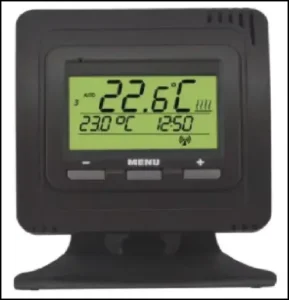 If you are only likely to be in the room for a short time, e.g. in the morning for breakfast, the direct and rapid heating within the radiation angle is switched on with the table thermostat. This results in a radiant temperature of 100° C after 120 seconds. The thermostat is positioned in the area of the radiation angle and regulates the temperature.
If you are only likely to be in the room for a short time, e.g. in the morning for breakfast, the direct and rapid heating within the radiation angle is switched on with the table thermostat. This results in a radiant temperature of 100° C after 120 seconds. The thermostat is positioned in the area of the radiation angle and regulates the temperature.
It is then switched off again until the room is entered again. The highest energy-saving effect is achieved here, as all radiators are switched off at all other times, including at night, and ZERO electricity is consumed.
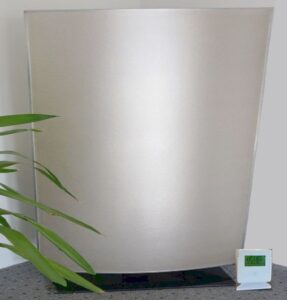 With this heating concept, a basic temperature of e.g. 16-18°C is preset. In the morning, the thermostat regulates it up to the desired feel-good temperature, e.g. 21.5°C. This corresponds to approx. 23°C compared to convection heating, as we have generally used up to now. This basic temperature can be set with the weekly program of the thermostat supplied or manually if you want to have a comfortable temperature.
With this heating concept, a basic temperature of e.g. 16-18°C is preset. In the morning, the thermostat regulates it up to the desired feel-good temperature, e.g. 21.5°C. This corresponds to approx. 23°C compared to convection heating, as we have generally used up to now. This basic temperature can be set with the weekly program of the thermostat supplied or manually if you want to have a comfortable temperature.
A weekly program is useful if the occupants have a relatively regulated, regular daily rhythm. With this heating concept, the thermostat is located outside the radiation cone and thus monitors the entire room.
With this concept, the radiator must be sufficiently large, as the entire room is to be heated. For larger rooms, several radiators must be distributed over the area. Consumption is not higher with several heating elements because they switch off earlier.
Infrared heating elements have a low carbon footprint due to the low amount of material used and the low number of mechanical components in their manufacture. No mechanical parts such as pumps, regulators, valves, compressors or endlessly long water-carrying pipe systems are required.
Infrared heaters can be operated effectively with green electricity and are easy to replace and recycle. In the first quarter of 2024, the German electricity grid already contained 52% renewable electricity. The target of 65% from mid-2028 for new buildings will be easy to achieve if infrared heating systems are used. This target has already been achieved by mid-2025 due to the large-scale use of renewable energy sources.
Durch die jetzt geplante stetige Steigerung der CO² Bepreisung werden ÖL und Gas immer teurer werden, sodass die Umstellung der Heizungen auf Strom immer sinnvoller und schneller von statten gehen wird. Diese Notwendigkeit bewirkt selbst auch noch ein schnelleres Ansteigen der Brennstoffpreise, da diese immer weniger nachgefragt und verkauft werden.
At the TU Dresden, the effects of combining a heat pump heating system for base load supply with an infrared heating system for peak load coverage were investigated in a standardized sample residential building. These investigations are based on the concept of so-called hybrid heating, a combination of infrared heating and heat pump.
The results showed that this can certainly be a concept for renovating old buildings. However, radiators with 50% efficiency were used here, which no longer correspond to the technical possibilities today. There are now infrared heaters with almost the maximum physically possible efficiency of 70% (AbegSun 69.5% +-2.8%). This high efficiency makes the use of an additional heating system, e.g. a heat pump, superfluous and uneconomical.
Dieses gilt auch für ein kleineres Wärmepumpensystem für die alleinige Versorgung des Haushaltes mit Heißwasser. Es ist seit Jahrzehnten nach vielen diesbezüglichen Diskussionen Konsens, dass die Warmwasserversorgung über elektronisch geregelt Durchlauferhitzer das weitaus effizientere System ist.
The hybrid system tests were not carried out with the most efficient heating elements. Infrared heaters with an efficiency of approx. 50% were used. If, on the other hand, infrared heaters with the maximum possible efficiency of approx. 70% are used to heat residential buildings, a hybrid solution as a combination of infrared and heat pump no longer makes sense, as the efficiency of the infrared heater increases by 28.57% compared to the IR heating elements used in the TU Dresden study.
Die Heizkosteneinsparung beträgt auf Grund der höheren Effizienz pro Jahr 548,54 € (32 ct/kWh – 6000 kWh Jahresverbrauch). Die Energieeinsparungen sind dabei konservativ linear zur Erhöhung des Wirkungsgrades gerechnet. Bei dem in der Studie angenommenen Lebenszyklus von 40 Jahren würde sich bei der Infrarotheizung eine zusätzliche Einsparung von 21.941,60 € ergeben. This makes a hybrid solution in combination with a heat pump economically pointless.
Bei der Untersuchung der TU Dresden ist man von einem Lebenszyklus der beiden Heizungen von 40 Jahren ausgegangen. Da die Wärmepumpe maximal eine Lebensdauer von 15-18 Jahren hat, mussten die Investitionen dafür zweimal gerechnet werden!
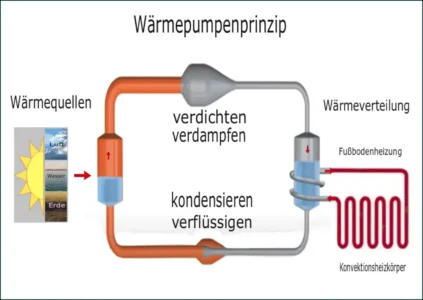 We are currently experiencing a hype regarding the use of Heat pump heaters. As they are exceptionally expensive, it is worth taking a look at this technology. From a physical and technical point of view, this is convection heating, which has been in use since time immemorial. Convection heating physically uses thermodynamics to distribute the heat generated in the room. This basic principle is related to the Efficiency with significant deficiencies is a problem. The resulting energy losses are no longer acceptable at today's fuel prices, but heat pump heating is still recommended to the public due to a lack of technical knowledge.
We are currently experiencing a hype regarding the use of Heat pump heaters. As they are exceptionally expensive, it is worth taking a look at this technology. From a physical and technical point of view, this is convection heating, which has been in use since time immemorial. Convection heating physically uses thermodynamics to distribute the heat generated in the room. This basic principle is related to the Efficiency with significant deficiencies is a problem. The resulting energy losses are no longer acceptable at today's fuel prices, but heat pump heating is still recommended to the public due to a lack of technical knowledge.
Jedoch kommt die modernere, auf quantenphysikalischen Grundlagen beruhende Heiztechnik der Infrarot-Strahlungsheizung auf Grund ihrer überlegenen Technik immer mehr in den Fokus bei Neubau und Sanierungen von Gebäuden. Dieses geschieht immer dann, wenn ein Bauherr oder Fachplaner das Märchen hinterfragt, dass man mit einer Wärmepumpenheizung das 3-5 fache der hineingesteckten Energie als Wärme hinten wieder herausholen könne. Wenn das so wäre, wären alle Energieprobleme der Welt mit einem Schlag gelöst. Diese Aussage jedoch direkt gegen den ersten und zweiten Hauptsatz der Thermodynamik, ist also mit Sicherheit nicht möglich. Deswegen hat es auch seit vielen Jahrhunderten niemand geschafft, ein Perpetuum mobile to build.
So dear readers - don't believe the fairy tales of politicians, journalists and (unfortunately also) energy consultants, but inform yourself and think!
The low efficiency of the heat pump is often due to an incorrect setting of the system, but often also to a much higher consumption of electrical energy, because a heat pump heating system uses a lot of electricity to generate the heat. Useful energy in space electricity, but on cold days this is generated and stored inefficiently in a boiler according to the old immersion heater principle. This has a particular effect with air heat pumps when the sub-zero temperatures in the air have to be used in winter to generate 28-30°C for underfloor heating or even 65°C for convection radiators. - The electricity consumption can quickly multiply astronomically. With heat pump heating, the flow temperature even has to be set approx. 10°C higher to compensate for the heat losses in the downstream pipe system.
The annual coefficient of performance (COP) created by the HVAC industry only defines the temperature gain of the volume flow at the end of the compressor unit. It does not take into account the losses of the entire system with the subsequent endless pipes and radiators. This means that not all values that determine consumption are included. This is explained in the IR-Bau research project as follows:
If a room is heated directly electrically via an IR heater, for example, the electrical consumption of the heater corresponds to the useful heat requirement of the room. Accordingly, for an energy comparison with heat pumps, the complete The necessary electricity and heat demand required to cover the useful heat demand of a room must be balanced. To determine an annual coefficient of performance, the “WPA” balance area used in VDI 4650 must therefore not be used alone, but the “WPHA” balance area must be used.
This balance space takes into account all electricity consumption and heat losses that are necessary to supply a room with the required useful heat, i.e. the pipe and storage losses, the transfer losses and the energy for pumps, control valves, heat meters and any additional room temperature controls that may be required. As a result, the seasonal performance factor in relation to the WPHA balance space is lower than the seasonal performance factor according to VDI 4650.
In reality, the difference in electricity consumption between the heat pump and IR heating is therefore less than the values according to VDI 4650 initially suggest.
Quelle: Forschungsprojekt „IR-Bau“; Projektabschlussbericht: Stand: 02/2020;
Aktenzeichen: SWD-10.08.18.7-17.11
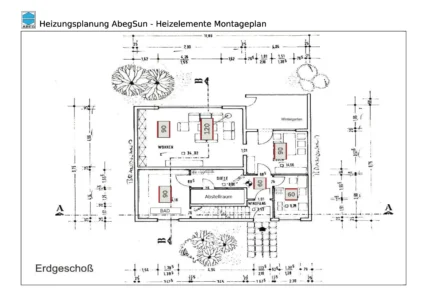
All prices stated on this website are (RRP) - non-binding sales prices including VAT. Please ask for a quote for final prices!
Our services include
Our AGB apply (General Terms and Conditions). About a request for quotation or by phone or e-mail to find out your current prices. If you wish, we can provide you with a price list when you place your order. free heating planning with installation plan, if you send us a floor plan (can be a mobile phone photo) by email - see Service →
Attention: with low consumption costs for years due to very high efficiency, acquisition costs are of secondary importance – see calculation table →
